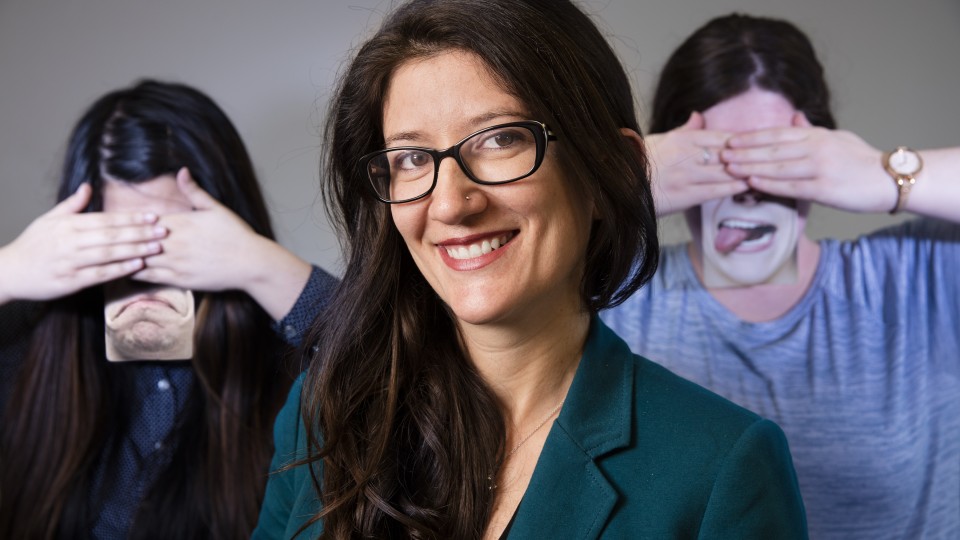· 4 min read
Are you positive? It may depend on where you look

An old proverb says the eyes are the windows to the soul, but science says for some of us, the mouth may be it.
A new eyetracking study from University of Nebraska-Lincoln’s Center for Brain, Biology and Behavior showed participants several images of surprised faces. Researchers found that those who seemed to interpret uncertainty in a more positive way clearly focused more quickly on the images’ mouths.
The results could eventually help inform treatment of maladies such as depression and anxiety, lead author Maital Neta said.
The UNL assistant professor of psychology said she wanted to know if and how people with positive valence bias – those who interpret uncertainty more positively – differ when looking at faces in which the emotion displayed is ambiguous.
Using 66 images of surprised faces and headset eyetrack technology, she and UNL Associate Professor of Psychology Michael Dodd analyzed 51 participants who were asked to examine the faces to determine if they were in positive or negative situations.
“Surprised expressions are a really good example for studying ambiguity because surprise is really the only expression that can be interpreted as positive or negative,” Neta said. “Surprise could be you’re walking into your birthday party or you’re about to get hit by a car. It’s basically the same exact facial signal, but it means very different things.”
Some face images were modified to force a different cognitive response in participants – some were blurred, forcing the brain to process it faster. Others were shown sharpened exponentially, making the brain slow down its processing.
Participants deemed more positive looked very quickly to mouths and, more slowly, to eyes. With blurred images, the study found that the faster someone looked to the mouth, the more positive the tended to be.
Scientists theorize that humans are hard-wired to see negativity first, a concept known as negativity bias. Neta said, however, that studies like hers add support to the notion that some people see things more positively – possibly because they are equipped to process more information from their surroundings.
“We think everyone sees negative first – because maybe it’s safer – and that the people who are positive actually override that negativity and can see the positivity,” Neta said. “That’s consistent with a lot of other research we’ve published and consistent with work showing that kids are more negative because kids don’t have those regulatory mechanisms set up until later in life.”
Some people never develop those mechanisms, Neta said, which can in extreme cases manifest as mental illness.
“We think positivity bias has important implications for things like depression or anxiety, because what happens there is you take things that aren’t necessarily negative and you interpret them as being negative and part of the treatment approach to depression and anxiety is to teach somebody to recognize that it might not be negative,” Neta said.
“If we can understand how the positive people are different from the negative people, we can maybe come up with strategies that might be useful for people with a really strong negativity bias.”
Neta’s next study will take the data from the most positive people from the study and see exactly where they looked at the faces, then show a new participant the surprised face through the eyes of someone with a positive bias.
“We can see then if that changes the way they interpret the faces,” Neta said. “That will show us if how you collect information from your environment has an effect on how you interpret that information, and if so, we can try to help teach people where to look and how to gather information.
“The long-term goal is how can we use this information we’re collecting about this valence bias to help people who may be suffering from extreme negativity.”
The study, “All in the first glance: first fixation predicts individual differences in valence bias,” was published in the journal Coginition and Emotion.











